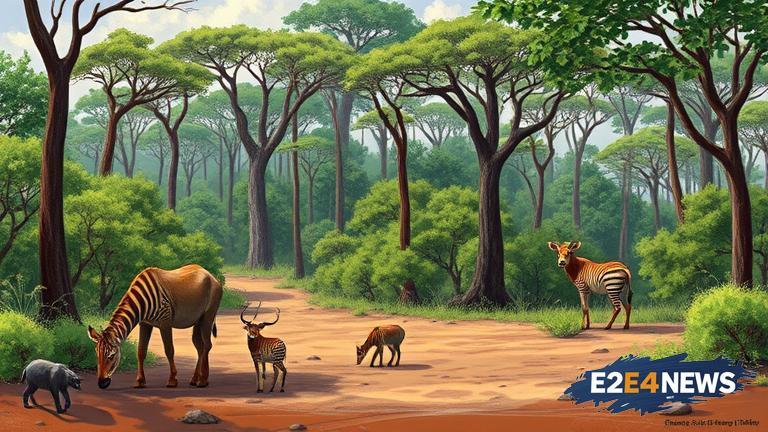The Kenyan government has announced an ambitious plan to restore the degraded Chepalungu Forest, located in the western part of the country. The forest, which has been severely degraded due to human activities such as deforestation and land fragmentation, will undergo a comprehensive rehabilitation program. The plan, which is expected to take several years to complete, aims to restore the forest’s ecosystem and introduce wildlife, including endangered species. The rehabilitation program will involve the planting of native tree species, the creation of wildlife corridors, and the establishment of conservation areas. The government has also announced plans to work with local communities to develop sustainable land-use practices and provide alternative livelihoods. The Chepalungu Forest is an important biodiversity hotspot, providing habitat for a wide range of plant and animal species. However, the forest has been under threat due to human activities, including logging, charcoal production, and agriculture. The degradation of the forest has also had significant impacts on local communities, including the loss of traditional livelihoods and the degradation of water sources. The government’s plan to restore the forest and introduce wildlife is expected to have numerous benefits, including the creation of jobs, the generation of income, and the improvement of livelihoods. The plan is also expected to contribute to the country’s efforts to combat climate change, as forests play a critical role in carbon sequestration. The rehabilitation program will be implemented in partnership with local communities, conservation organizations, and other stakeholders. The government has also announced plans to establish a conservation trust fund to support the rehabilitation program and ensure its long-term sustainability. The trust fund will be used to support conservation efforts, including the protection of wildlife and the restoration of habitats. The government’s plan to introduce wildlife to the Chepalungu Forest is also expected to boost tourism in the area, providing an important source of income for local communities. The introduction of wildlife will also help to maintain the balance of the ecosystem, ensuring the long-term health and sustainability of the forest. The rehabilitation program will also involve the development of infrastructure, including roads, bridges, and conservation facilities. The government has also announced plans to establish a research center to study the forest’s ecosystem and monitor the impacts of the rehabilitation program. The research center will provide important insights into the forest’s ecology, helping to inform conservation efforts and ensure the long-term sustainability of the forest. The government’s plan to restore the Chepalungu Forest is a significant step towards achieving the country’s conservation goals, including the protection of biodiversity and the promotion of sustainable development. The plan is also expected to contribute to the country’s efforts to achieve the United Nations’ Sustainable Development Goals, including Goal 15, which focuses on the conservation and sustainable use of terrestrial ecosystems. The rehabilitation program will be implemented in a phased manner, with the first phase focusing on the restoration of the forest’s ecosystem and the introduction of wildlife. The second phase will focus on the development of infrastructure and the establishment of conservation facilities. The government has also announced plans to engage with local communities and other stakeholders to ensure that the rehabilitation program is implemented in a transparent and accountable manner. The plan to restore the Chepalungu Forest is a significant investment in the country’s natural resources, and is expected to have numerous benefits for both the environment and local communities.
